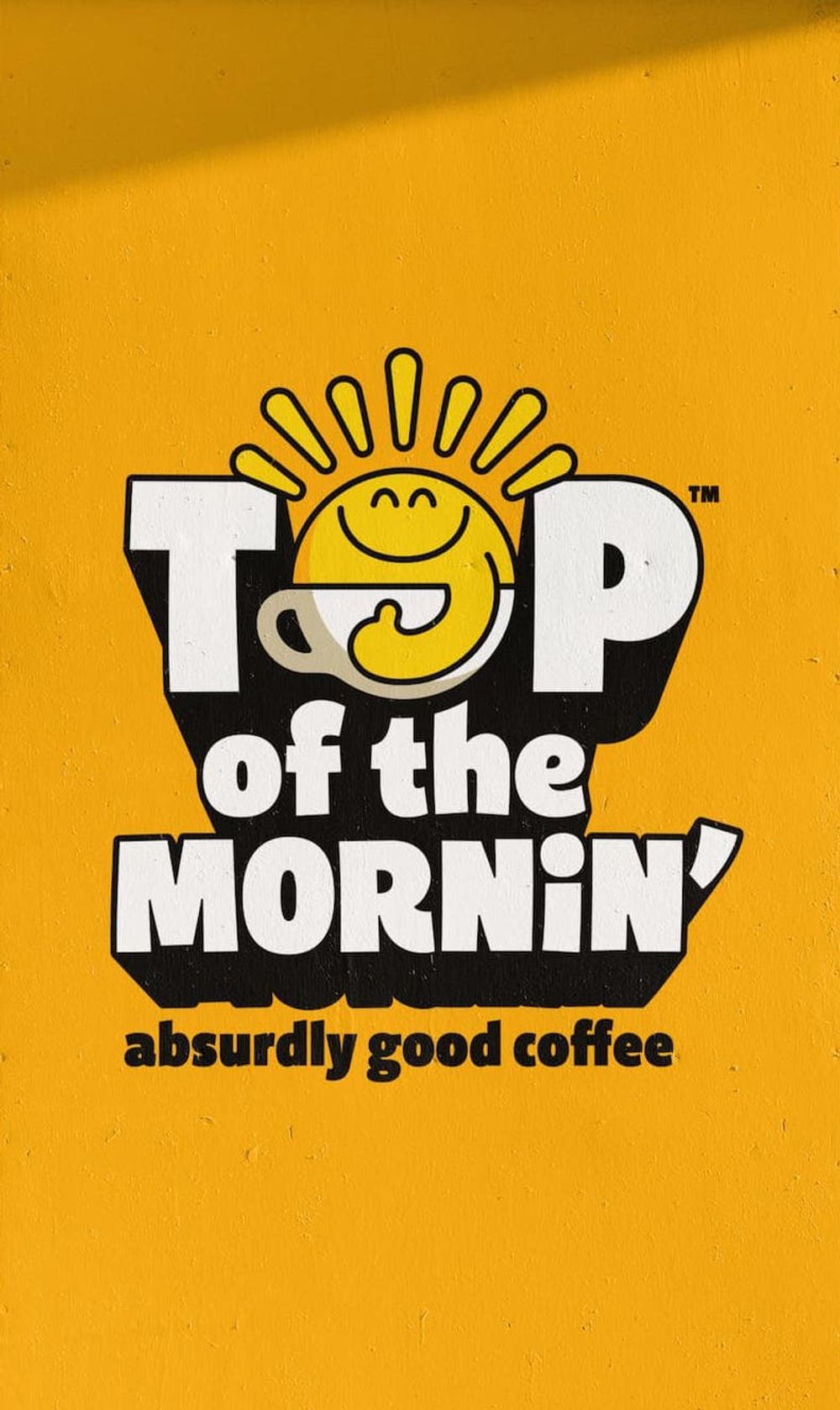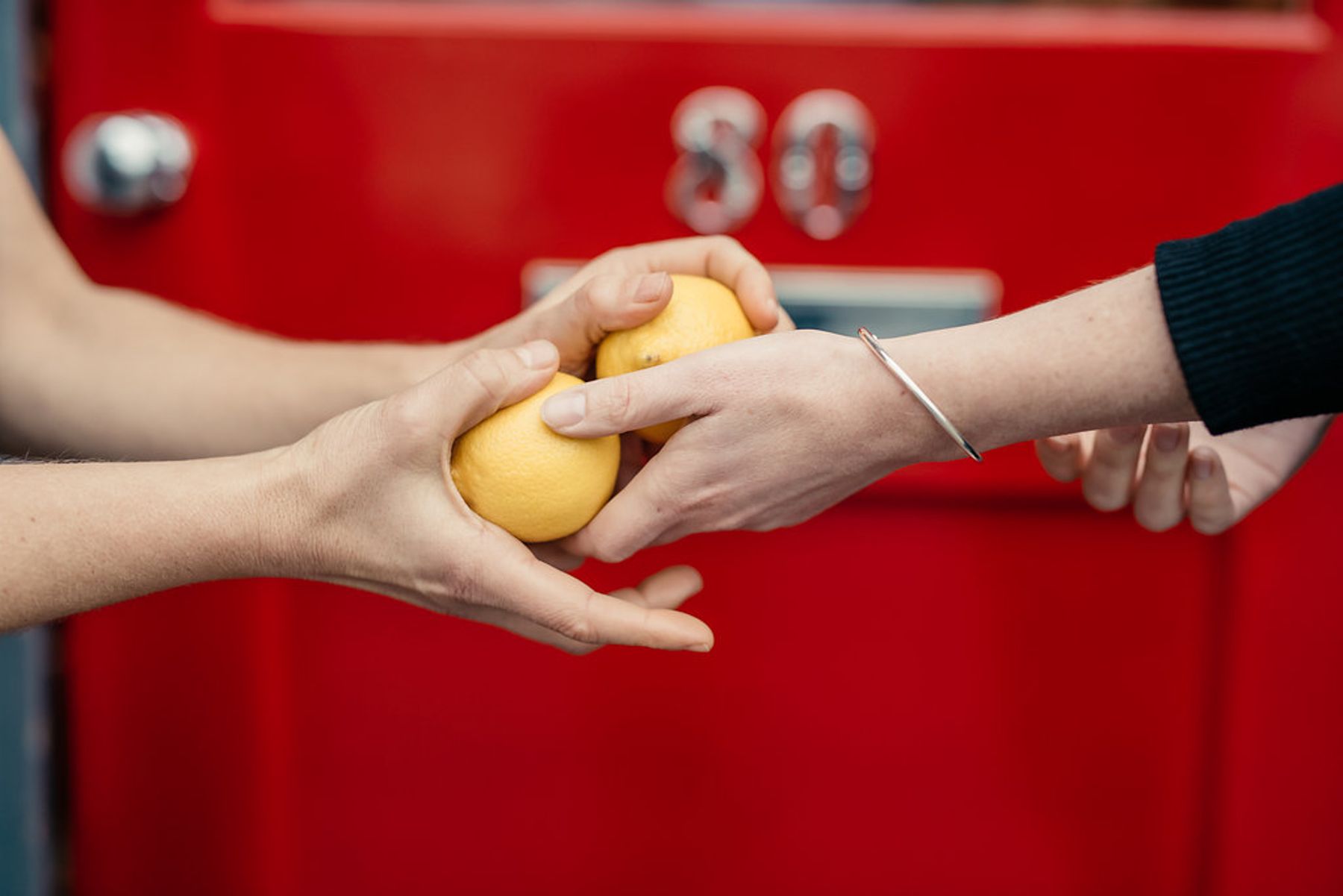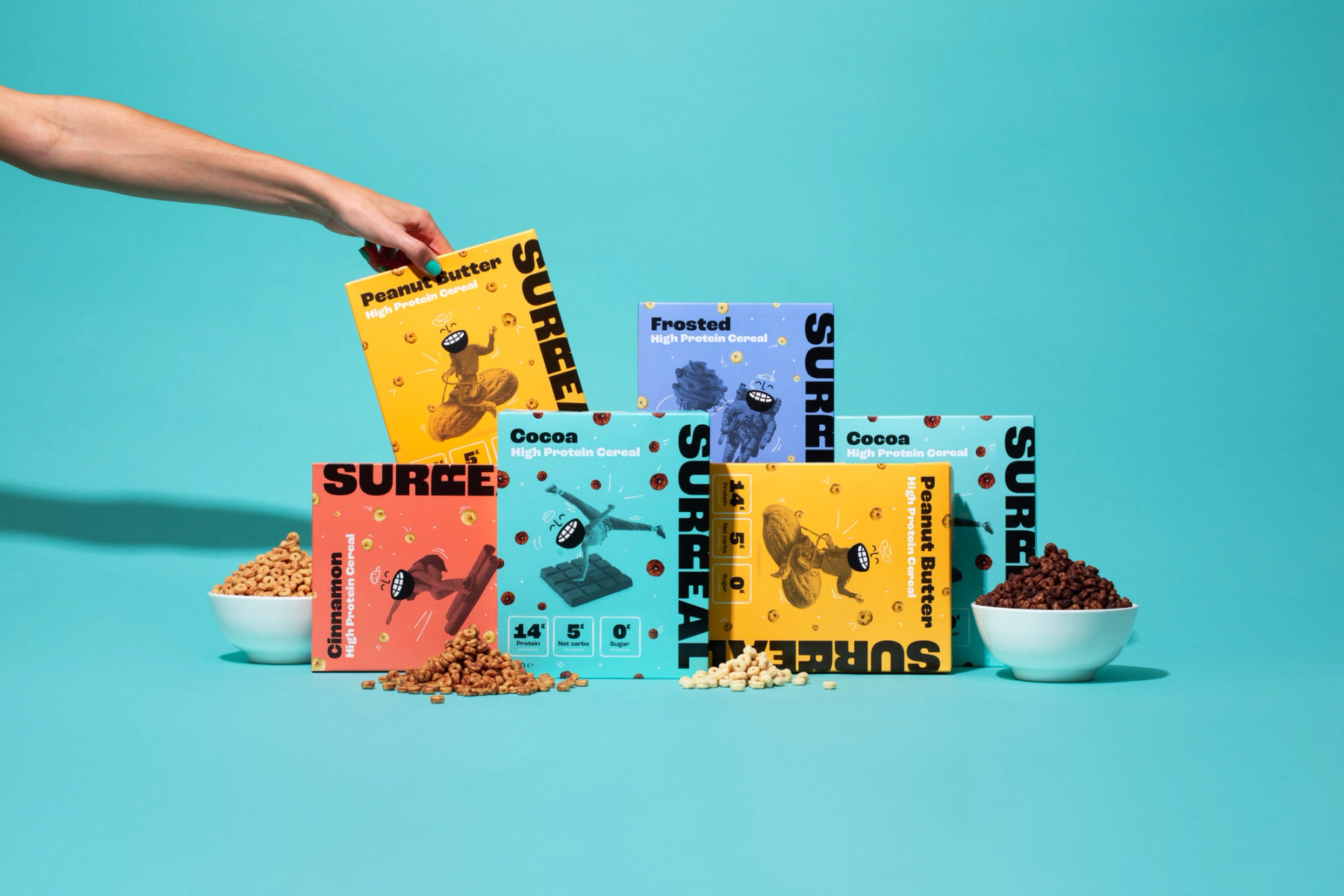Friction isn’t always a bad thing when it comes to the client-agency relationship. We asked AUFI client and Top of the Mornin’ Coffee CEO Hugh Thomas why developing some creative “push and pull” can lead to branding magic
Hugh Thomas has worked at some of the most forward-thinking drinks brands around, including Vita Coco, Vitamin Water and Ugly Drinks – which Thomas bootstrapped from his bedroom in 2016 with the aim of creating a healthier alternative to fizzy drinks. Having since left the business, Thomas is now working with other startups on launch strategies and branding, as well as overseeing things at Top of the Mornin’ Coffee.
We sat down with him to discuss what he’s learned from his years of entrepreneurship – including why he always gets a good night’s sleep before delivering feedback, and how feeling a bit uncomfortable can be a sign that the creative work’s heading in the right direction.


- Emma TuckerHow did you get involved in the consumer goods world?
Hugh ThomasI’ve always wanted to be an entrepreneur, and I’ve had that feeling since I was nine or 10-years-old. I was never a tech kid that was into coding or anything like that. Before I was 16 I was flipping boxing equipment on eBay; I’m not a boxer, but I found a way to get it cheap and sell it. I also used to do car boot sales with a friend of mine. I did [youth business programme] Young Enterprise when I was 15 or 16, and I can’t remember what we made or sold, but I got some good guidance from the local business mentor. It sounds weird, but this was around the time The Apprentice was on TV, and I used to watch it when it came on after The Simpsons. Whenever they did the lemonade stand challenge at the beginning, I was like, I could do this better. So selling stuff has always been an interest, and I’ve always loved food and drink in particular – the way it connects with people is incredible.
“My goal has always been to democratise healthy stuff, and that’s harder right now because of where the economy’s at, but I’ve always wanted to take healthy stuff and make it as exciting but better for people.”
Hugh Thomas, AUFI Client and Top of the Mornin' Coffee CEO
- ETAnd that connection is very immediate.
HTIt’s immediate, and everyone has an opinion on it. It’s very emotional. I grew up in a house that loves food and drink, but I also have an appreciation for nostalgia and design, and the sense of humour of brands. I developed an appreciation for the different price points and types of products. Beverages have always been my first love, because there’s something about them that’s even more fast-paced, lifestyle-wise, than other consumer products. When you hold a can of drink it says so much about who you are, and what your choices are in life; or at least that’s how I feel. With Vita Coco or Vitamin Water you could be backstage at a gig, or half time at a sports event, or in a bodega in New York. It takes you to the most amazing places and I don’t think other categories do that. I just love the number of touchpoints it has.
I remember working for Heinz at university, and I’d be buying private label beans because I was skimping on money. I bought a can of Heinz beans and had it on a jacket potato, and that taste immediately took me back to being a kid. The power of brand is incomprehensible in the same way as music.
- ETBrand is so tied up in that experience of food and drink. I always joke that if I was going to be a designer I’d design packaging, because it’s something that gets into people’s houses and hands.
HTThat’s what I love. When I first worked at Heinz I felt very lucky. I was restricted, because I was working at a big company, but the brands I worked on – Heinz Beans and Ketchup – were up there in terms of some of the highest penetration products in the UK, and the number of households they’re in. We used to do house visits and see what’s in people’s cupboards and what’s in the freezer, and what that means to people and how it feeds a family of four.



- ETWhat lessons did you take from working somewhere like Heinz, which is obviously an iconic brand? Are there things that have informed your own approach to branding and building businesses?
HTHeinz Ketchup is one of the oldest food brands in the world. Henry Heinz was the first person to put sauces in transparent packaging, and the Heinz Beans blue is arguably one of the most disruptive things to walk past in that red wall of the soup aisle. So I learned some early principles about disruption. And then it’s about consistency. My job was almost about enforcing those 100 years of rules, and what’s interesting is how that evolves without losing what is true to the brand’s DNA. Lots of businesses lose their essence and that iconography by a lack of discipline. When you’re refreshing the brand it’s like sports teams; The All Blacks might change the players, but the philosophy stays the same. With any of the brands I've worked on since, I try and create something disruptive with clear iconography – and anybody who’s working on the brand, their job is enforcing the guidelines.
“One of the things I’ve learned is that in order to buy into the guidelines, it has to be an owned approach by the team that’s working on it, versus it just being the founder’s brand.”
Hugh Thomas
- ETHow do you maintain this sense of a brand’s DNA, particularly as a business grows and the team gets larger?
HTOne of the things I’ve learned is that in order to buy into the guidelines, it has to be an owned approach by the team that’s working on it, versus it just being the founder’s brand. I remember when I was a graduate at Heinz, they always asked me to feedback in the meetings before anyone else said anything, so I wouldn’t just repeat what the most senior person said. I was forced to have my own opinions, so whenever anyone junior works with me I get them to feedback first in the meeting. The reason that’s important is because a) people learn faster, but also b) when the branding is finished, that person feels a certain ownership over it. So when they’re enforcing it with other team members it’s not, ‘Oh, Hugh said this, so this is what it has to be’, it’s, ‘This is the brand and the company we work at.’. They start training people like that and it becomes the DNA of the company. That’s what the best brands do.
- ETThat also avoids that feeling of the founder being the only person in control.
HTInstead of it being autocratic, you learn to have your vision and manage the team to communicate that. I’ve learned the hard way, from when I first started out as a founder, that just pushing through what I wanted doesn’t work. There’s ways of doing it that are more collaborative, and that means there’s more great ideas and people owning it alongside you. It’s more fun as well, because it becomes a living, breathing thing, and not just the founder’s vision on a piece of paper.
“If you want work that’s going to make you feel something, you have to have friction between the agency and client in a way that’s pushing things to a place that is original and uncomfortable.”
Hugh Thomas
- ETObviously the relationship with people working at the brand is important, but there’s also the partnership with your agency. How do you build that same level of trust and honesty there too?
HTThe whole point is that there’s friction. If you just accept what your agency shows you, you can end up with something that’s not been pushed as far as possible. You need to have that push and pull both ways, and I quite like when I feel uncomfortable when I see work.
If you want work that’s going to make you feel something, you have to have friction between the agency and client in a way that’s pushing things to a place that is original and uncomfortable. You want to work with other people that have a vision, and there’s got to be that bit of friction between the two in order for it to find a common space.
There’s also ways of framing feedback – I try to write it as questions for the agency to solve. I’ve also learned to never give true feedback in the meeting or the same day; I always sleep on the work. For me, that’s been a massive change, because work changes after a couple of days living with it.
“I love iconic branding work, and I’m always trying to approach stuff with a 50- or 100-year-old view on it.”
Hugh Thomas
- ETI’ve definitely seen creative work and not been that impressed, but when I look again the next day it’s grown on me. You almost need a chance to let it filter through your brain.
HTAnd so does the consumer. I love iconic branding work, and I’m always trying to approach stuff with a 50- or 100-year-old view on it. I feel like that’s where the best brands are built. But I always want work to have soul, so rarely, in a brief, will I have brand references in there because I think that’s where you start giving people guardrails that you don’t need.


- ETHow critical is the brief in terms of getting the kind of work you want?
HTI’d say getting the brief right is critical, but there’s different ways of briefing. You’ve got to have your written brief – because it’s something to hold everyone accountable to, and if you’re really veering off it helps you, as a client, to save money, manage people, and hold timelines to account. Then there’s the verbal briefing process, where we really talk through everything. That’s as vital as writing it down. You want to get everyone on the same page, and then you want the agency to stretch you away from it. Your job is to pull it back, and they push it away, and over a few months of doing it, you end up somewhere that’s stretching the brand but still the core of what you asked for. If they just deliver what you asked for then it’s not really creative.
“You want to get everyone on the same page, and then you want the agency to stretch you away from it.”
Hugh Thomas
- ETFor a lot of businesses, the priority is to get your product out there and into people’s hands. But at some point you’re looking at the brand you launched with and thinking about how to refine it. That can be a shock because it can be a significant financial outlay. Why is it worth the money?
HTFundamentally, I believe in it. I want to make people feel something, so I would almost rather fail than put something bland out there. But not every founder is the same. It’s a challenge, because some people will think, ‘Why don’t we just invest into Facebook adverts and sell more product instead?’ That’s fair, but for me a true brand is the moat, and it’s the multiplier too. What people don’t see with the branding work is that it’s not just the packaging, design and the website; it’s the email signature, the tone of voice, the people you employ and the decks. As soon as you’ve got a brand that people love you start getting great people trying to work for you, as well as more customers and investors reaching out to you. How do you put ROI on that?



